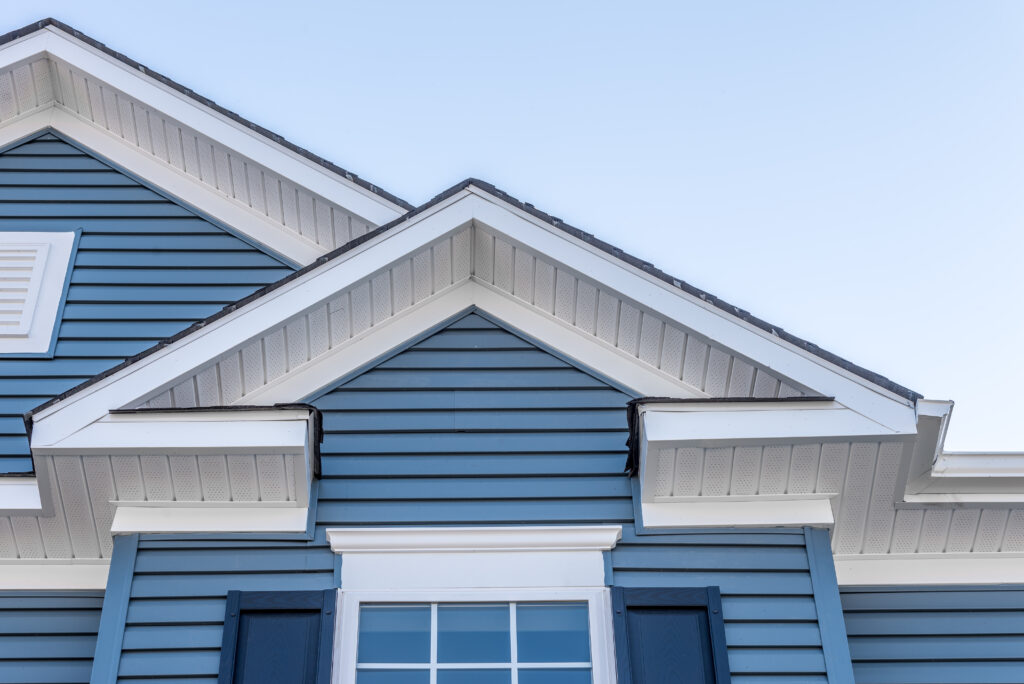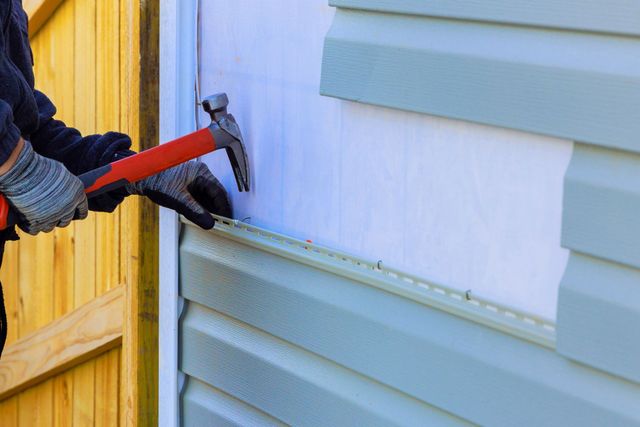The Vital Overview to the Various Types of Exterior Siding and Their One-of-a-kind Benefits
In the world of home improvement, selecting the ideal siding is a vital choice that affects both aesthetic appeal and functional efficiency. With so several choices to consider, which siding product absolutely stands out for your details project?
Wood Siding
Timber house siding, a prominent option for domestic exteriors, provides a timeless visual that integrates natural beauty with architectural honesty. This house siding material is available in numerous styles, including clapboard, tiles, and board-and-batten, enabling house owners to tailor their façade to match their design choices. Wood exterior siding is normally crafted from resilient species such as cedar, redwood, or ache, which are understood for their strength and capability to endure environmental stress factors.
One of the main benefits of wood siding is its superb insulation residential or commercial properties, which can add to energy performance and lower home heating costs. In addition, wood house siding is naturally degradable, making it an eco friendly alternative when sourced sustainably. Regular maintenance, consisting of painting or discoloration, can lengthen its life expectancy and boost its appearance, allowing property owners to maintain the natural appeal of the timber.
However, prospective drawbacks include vulnerability to parasites, rot, and climate damages, requiring sufficient therapy and maintenance - morris siding contractor. Regardless of these concerns, when appropriately looked after, wood home siding can give a durable and attractive remedy that improves the personality of a home while supplying a warm, welcoming environment

Plastic Exterior Siding
Plastic home siding has become a leading option for property owners seeking a low-maintenance exterior choice that combines longevity and cost. This functional material is crafted from polyvinyl chloride (PVC), making it immune to various climate conditions, consisting of dampness and UV rays. As an outcome, vinyl house siding does not warp, rot, or discolor, making certain lasting visual appeal.
Among the key benefits of plastic exterior siding is its extensive variety of shades and designs, enabling property owners to attain the desired seek their home without the demand for frequent repainting. Furthermore, plastic exterior siding is very easy to mount, which can considerably minimize labor prices during building or restoration projects.
Plastic house siding also adds to energy effectiveness. Lots of options function insulation support, which improves thermal efficiency, aiding to keep comfy indoor temperatures and potentially reducing power expenses. In addition, its smooth surface area facilitates simple cleaning, needing only regular washing with a garden hose pipe to eliminate dust and debris.
Fiber Cement Exterior Siding
Fiber cement exterior siding has gained traction amongst home owners and contractors alike due to its remarkable mix of durability and visual adaptability. Made up of a blend of cement, sand, and cellulose fibers, this house siding alternative is crafted to stand up to severe climate problems, i thought about this including high winds, hefty rain, and temperature variations, making it a long-lasting selection for domestic outsides.

One of the key benefits of fiber concrete siding is its resistance to bugs, such as termites, and its non-combustible nature, offering improved fire safety. morris siding contractor. Furthermore, it is available in a large array of designs, shades, and textures, allowing home owners to accomplish their wanted aesthetic without sacrificing efficiency
An additional benefit is its low maintenance needs; fiber cement home siding typically requires painting or discoloration every 5-10 years, which is much less constant than other products. In addition, its longevity adds to a reduced overall expense of ownership, as it reduces the demand for constant repairs or replacements.
Eventually, fiber concrete siding represents an outstanding investment for those seeking a resilient, attractive, and functional outside alternative, incorporating both kind and feature to boost the home's aesthetic allure.
Metal Exterior Siding
The allure of metal siding depends on its robust toughness and modern-day aesthetic appeal, making it a favored selection for modern design. Available in materials such as light weight aluminum and steel, steel siding offers a variety of coatings and colors, permitting home owners to attain a tailored appearance that complements their design vision.

Energy effectiveness is one more considerable advantage, as lots of steel exterior siding products are developed with insulation options that aid regulate interior temperature levels. This can cause lowered power costs with time. In addition, metal exterior siding is often recyclable, making it an eco-friendly choice for sustainability-minded homeowners.
The installation procedure for steel exterior siding can be fairly straightforward, leading to a quicker turnaround time for construction tasks. Generally, steel exterior siding combines capability and style, making it a practical option for those looking for a visually enticing and enduring exterior finish.
Block and Rock Home Siding
Brick and rock exterior siding stands out as a timeless selection that improves the aesthetic beauty of any type of home. Recognized for their longevity and reduced my company maintenance, these materials offer an exceptional return on financial investment while boosting the home's visual appeal. Offered in different shades, structures, and patterns, block and stone can be customized to suit diverse building designs, from traditional to modern-day.
One of the primary benefits of brick and stone house siding is their energy effectiveness. Both products have natural protecting buildings that help control interior temperature levels, possibly decreasing home heating and air conditioning prices. Furthermore, they provide exceptional fire resistance compared to other siding choices, adding to boosted safety and security.
One more advantage is their long life. Block and rock can last for years, frequently needing minimal upkeep beyond occasional cleaning. Unlike wood home siding, they are resistant to parasites and rot, making certain a long-lasting exterior that stands up to the aspects.
Verdict
In summary, the option of home siding significantly affects a home's aesthetic allure, energy performance, and maintenance requirements. Each type of exterior siding-- whether wood, plastic, fiber steel, brick, or concrete and rock-- provides one-of-a-kind advantages customized to various homeowner preferences and ecological problems.
One of the key benefits of timber siding is its exceptional insulation properties, which can add to power efficiency and reduced heating expenses. In addition, wood home siding is biodegradable, making it an ecologically pleasant alternative when sourced sustainably.One of the primary benefits of steel exterior siding is its resistance to numerous ecological factors.Power performance is another considerable benefit, as several metal home siding items are made with insulation options that assist control interior temperature levels. Each type of exterior siding-- whether timber, plastic, fiber metal, brick, or cement and rock-- offers distinct benefits tailored to different house owner choices and ecological problems.